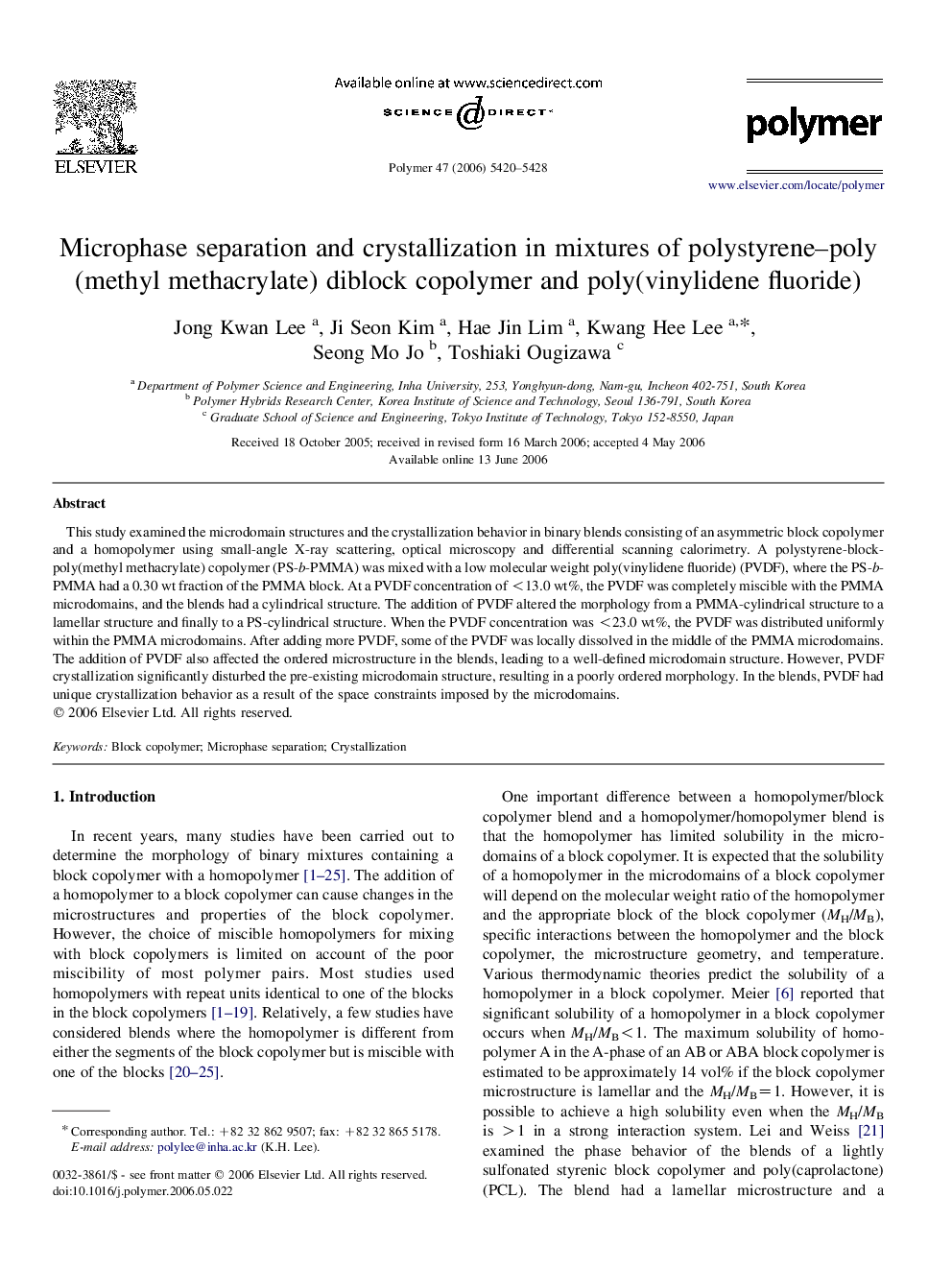| Article ID | Journal | Published Year | Pages | File Type |
|---|---|---|---|---|
| 5189150 | Polymer | 2006 | 9 Pages |
Abstract
This study examined the microdomain structures and the crystallization behavior in binary blends consisting of an asymmetric block copolymer and a homopolymer using small-angle X-ray scattering, optical microscopy and differential scanning calorimetry. A polystyrene-block-poly(methyl methacrylate) copolymer (PS-b-PMMA) was mixed with a low molecular weight poly(vinylidene fluoride) (PVDF), where the PS-b-PMMA had a 0.30Â wt fraction of the PMMA block. At a PVDF concentration of <13.0Â wt%, the PVDF was completely miscible with the PMMA microdomains, and the blends had a cylindrical structure. The addition of PVDF altered the morphology from a PMMA-cylindrical structure to a lamellar structure and finally to a PS-cylindrical structure. When the PVDF concentration was <23.0Â wt%, the PVDF was distributed uniformly within the PMMA microdomains. After adding more PVDF, some of the PVDF was locally dissolved in the middle of the PMMA microdomains. The addition of PVDF also affected the ordered microstructure in the blends, leading to a well-defined microdomain structure. However, PVDF crystallization significantly disturbed the pre-existing microdomain structure, resulting in a poorly ordered morphology. In the blends, PVDF had unique crystallization behavior as a result of the space constraints imposed by the microdomains.
Related Topics
Physical Sciences and Engineering
Chemistry
Organic Chemistry
Authors
Jong Kwan Lee, Ji Seon Kim, Hae Jin Lim, Kwang Hee Lee, Seong Mo Jo, Toshiaki Ougizawa,
